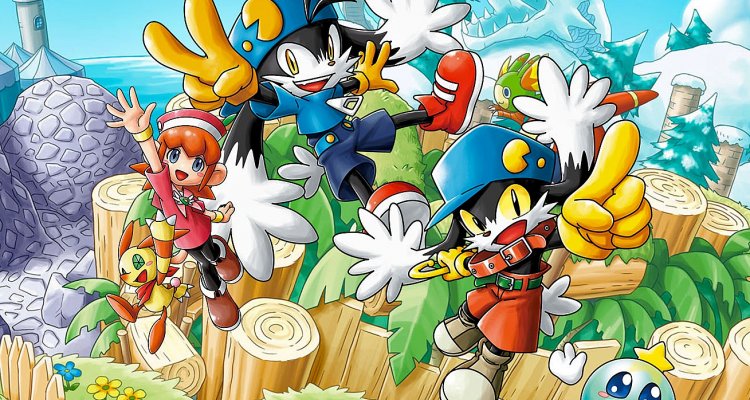Klonoa: Door to Phantomile and Klonoa 2: Lunatea’s Veil are back as a remastered duo in the Klonoa Phantasy Reverie Series. In 1997, PlayStation has long been synonymous with video games around the world, including Italy. In the first Sony console, British games dictated rhythms and fashion, American games tried to reinvent themselves away from the PC with some success, and Japanese games marked technical and conceptual revolutions.
The magical and unrepeatable years, when the medium was still mainly of creative craftsmanship and artistic automation, now unfortunately in vogue, were only in their infancy and could reflect only positive effects. In this context, a very special character was born and raised in the Bandai Namco workshops, halfway between a cat, a rabbit, and a dog, which was immediately renamed Klonoa by its author, Yoshihiko Arai. Klonoa and its eponymous adventure are about to return double remastered for all popular gaming platforms, along with the 2001 PlayStation 2 sequel, and it’s been a delight for us here in LA. Try the Klonoa Phantasy Reverie Series preview. Conclusion? A warm, pleasant and reassuring journey through time, like a sibling’s hug.
A mascot forever
The music, the graphics, and of course Klonoa itself helped us travel back in time to where it all started: that 1997 we just told you about.
Let’s talk about versions rearrangedso without major technical innovations, but these two core games of the PlayStation era have an unwavering appeal that can only be ruined by remodeling as you did in a remake.
The trees are a thing of the past, round and devoid of detail, the colors perhaps too bright by today’s standards, but that’s definitely the beauty of Klonoa and many of the games from the same era.
We’ve seen this happen before: if you try to add new polygons to the screen, changing the cheats to get around technical limits era with brutal displays of power and flashes of photorealism, you’re probably about to ruin it. In these cases, a true remake would eliminate Klonoa, resulting in something else that wasn’t the games Bandai Namco was aiming to celebrate today.
immortal game
During testing, we confirmed that Klonoa remains unaffected by the passage of time, even in gameplay. The game is 3D but not open world, nor does it allow for the same freedom of movement that is fashionable after pixels are permanently set aside in the name of the third dimension. Here we move mainly in two-dimensional planes, rarely in depth, unsurprisingly when spoken of as the first 2.5D platform game in the nineties.
As the type indicates, sensitivity in jumps everything is also in Klonoa, enemies represent both a threat and a possibility, as they can dash in all directions to defeat other opponents and also jump higher or solve different puzzles that will change during the two included adventures. In the Klonoa Phantasy Reverie Series.
A different challenge…
The gameplay of the two Klonoa is superb today as it was yesterday. difficulty It does not hide in complex combinations of commands or combinations of punishing blows and bumps. The experience is smoother than what is usually offered in more modern platform games, opting instead for a more cerebral, logical type of difficulty.
At the turn of the new millennium, developers were certainly not afraid to treat their audiences as living beings, instead of loading everything into eye-thumb synergies as they have been in recent years. What a strange thing this creates nice short circuit this shows how games of the past might look like with more modern, crisp graphics than one might expect (and the first Klonoa), especially games that now have more than two decades on their shoulders. neither has the beauty of twenty-five).
SYMPTOMS
- An evergreen game
- Klonoa is as delicious as we remember
- As colorful as few modern games
- Two-player mode unknown
- Will modern gamers be able to appreciate it?
Source: Multiplayer
